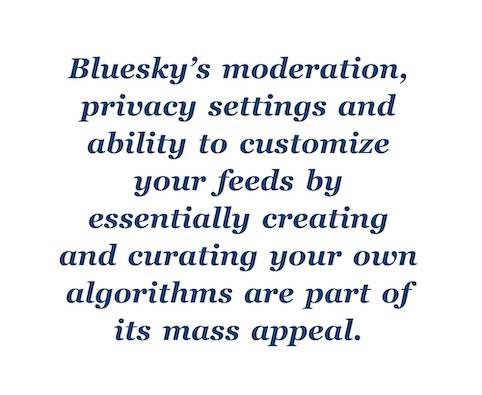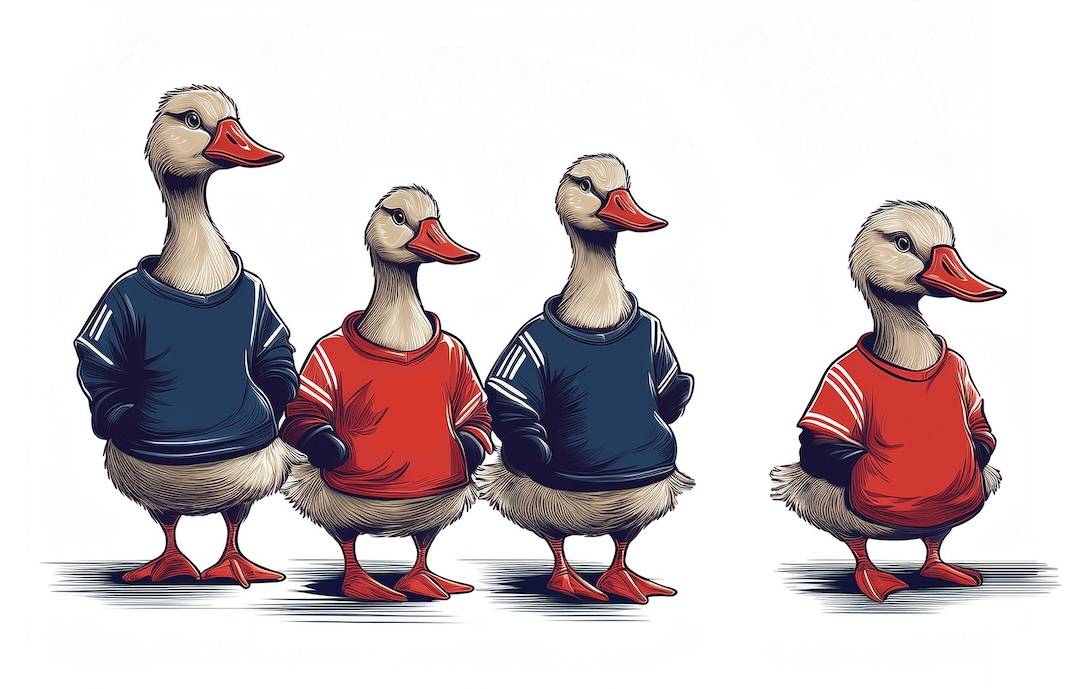Canadians, of late, have begun looking within our own borders for things like groceries, apparel, business partnerships — and now our technology. Borne of the “Elbows Up!” movement that responded to threatening gestures from a new U.S. administration, Gander — a proudly Canadian-made social media platform — has swooped in to shake up the social media status quo.
In True North fashion, it takes the shape of our most fearsome national symbol, the mighty Canada Goose. Our feathers are ruffled, and we are taking flight with a Canadian alternative to the usual tech giants, as Gander has already gained the support of Arlene Dickinson, prominent Canadian businessperson and Dragon’s Den investor who has publicly backed the platform.
“I got involved in a lot of conversations around data sovereignty and how precarious a position Canada is in relying on everything that we do coming out of U.S. tech,” says Ben Waldman, CEO and product director of Gander Social. Waldman has been in the online development space for the last 25 years and felt a real shift with the recent U.S. election, and was motivated when he saw major players in the tech space attending the presidential inauguration.
“We had just gone through the U.S. election cycle, we were headed into our own elections and I think it was pretty obvious to everyone just how impactful social media had become, with all of the disinformation, misinformation, hate, bullying and everything taking up so much time and space in our lives and the damage it can do to a democracy.”
What is Open Source?
At first glance, Gander looks like a mashup between X and Instagram, but there are three very striking differences: It’s designed, built and owned in Canada; your data stays in Canada; and private really means private.
Gander is open source and built on the Authenticated Transfer Protocol (AT Protocol or atproto), sometimes nicknamed “the Atmosphere.” It’s designed to give users control and portability similar to how email works. For example, you might have a Shaw, Gmail or Outlook email address, and use Apple Mail, Gmail or another app to access it. You can send an email to anyone regardless of whether it’s a Gmail address or an Outlook address, etc. That’s how the AT Protocol brings that same flexibility to social media — you’re not locked into one app and you can take your followers with you.
In contrast, platforms like Meta (Instagram/Facebook) and X/Twitter are closed systems. They control everything — your identity, your content, your followers and how your feed is shown. If you leave, you lose your account, your history and your audience. You can’t move your profile to another app, and no other app can plug into their networks. It’s like if you had a Gmail address and were only allowed to email other Gmail users using only the Gmail app.
X’s Controversial Changes
The “X-odus” is an ongoing mass departure of users from Twitter (now X), sparked mainly by its transfer of ownership in 2022, followed by controversial changes mainly around content moderation, layoffs, reinstatement of banned accounts and other privacy factors that caused many users and advertisers to lose trust in the nearly two-decade-old platform.
More recently, Meta began blocking Canadian news on its platforms, Facebook and Instagram, in response to Canada’s Online News Act, which was passed into law in June 2023.
Social media has become complicated, especially for Canadian users, and its next generation, dubbed “Web 3.0,” is about building a more open and user-empowered internet, one that gives individuals greater control over their data, identity and online presence.
Instead of everything being controlled by a few large tech companies (or their billionaire owners), Web 3.0 leverages technologies like decentralized cloud infrastructure and new privacy tools to create a more distributed digital ecosystem. Users can host content, manage data and interact online without being locked into a single platform or provider.
Billionaire Proof
One such company welcoming the X expats is Bluesky, a decentralized social media app that emphasizes transparency and user control.
Bluesky started as a project funded and supported by Twitter; however, once Elon Musk took over Twitter as its sole owner in October 2022, the relationship was terminated and the original plan of building the AT Protocol to support Twitter as a client was no longer possible.
Instead, users were invited to a private beta to test out the app in March of 2023, and by September it hit one million users. In 2024, Bluesky grew from an invite-only app with only three million people to a public app of over 25.9 million people. There are over 37 million Bluesky user accounts as of July 2025. (By comparison, Twitter/X had about 540 million active users worldwide as of last January.)
Bluesky’s moderation, privacy settings and ability to customize your feeds by essentially creating and curating your own algorithms (see what you want on your timeline, from whomever you want) are part of its mass appeal.
“The focus we’ve always kept is that users can have choice over their experience, developers can have the freedom to build and creators can keep their relationship with their audience,” Bluesky CEO Jay Graber told the Vancouver Web Summit audience last spring. “Those are the principles we focused on early on and I think that those are important, not just for us but for anyone who wants to steward social [media] in a good way.”
 Thousands of post-secondary institutions, celebrities, news outlets and European organizations have all left X, and now Meta, for Bluesky. For instance, in May the BC Museums Association moved away from all Meta platforms due to the elimination of in-house fact-checking and permitted hate speech, using Bluesky and LinkedIn exclusively for their social media. In their final statement on Facebook, the association said: “The BCMA no longer feels that using Meta social media platforms aligns with our values.”
Thousands of post-secondary institutions, celebrities, news outlets and European organizations have all left X, and now Meta, for Bluesky. For instance, in May the BC Museums Association moved away from all Meta platforms due to the elimination of in-house fact-checking and permitted hate speech, using Bluesky and LinkedIn exclusively for their social media. In their final statement on Facebook, the association said: “The BCMA no longer feels that using Meta social media platforms aligns with our values.”
In an interview with CNBC’s Money Movers last November, Graber said Bluesky’s open design is intended to give users the option of leaving the service with all of their followers, which could thwart potential acquisition efforts.
If someone bought Bluesky or if the company went down, everything is open source, making it essentially billionaire proof. “What happened to Twitter couldn’t happen to us in the same ways, because you would always have the option to immediately move without having to start over,” said Graber.
Built and Hosted in Canada
Gander, as one of the most intriguing newcomers in social media, offers something even more paradigm-shifting than short-lived video circa 2013: a fun, private, ethical social platform that’s proudly Canadian-owned and hosted.
 Looking at Bluesky’s open-source model, Waldman spent a few days building a proof of concept of a Canadian social media platform with an Instagram-like experience with Canadian content.
Looking at Bluesky’s open-source model, Waldman spent a few days building a proof of concept of a Canadian social media platform with an Instagram-like experience with Canadian content.
The main goal is to host Gander on sovereign cloud technology in Canada so it’s not beholden to the Cloud Act and Patriot Act, both of which have expanded U.S. government surveillance capabilities, or to U.S. tech oversight.
“In creating this parallel network, we’re able to allow our users to decide for themselves and to make a choice: Do you want to post to the global community or just post in Canada?” says Waldman. “Same thing for the content they consume — do they just want to consume Canadian content or content globally?”
While they’re building a Canadian network with Canadian content that is hosted in Canada, it will be open to the global audience. “Users will be able to access the broader atmosphere, the broader network,” says Waldman. “But even in the long run our goal is to make sure that people from all over the world can use it and even that this sovereign network will be replicated around the world so that everybody is able to participate and also feel protected, in the event of any kind of strife with a neighbour.”
Gander has partnered with ThinkOn, an Ontario-based, managed IT service provider that can supply the sovereign cloud infrastructure. This saves the team, with an ambitious launch plan, months of effort for building and scaling the network.
Authentic Engagement
Gander fully expects to support Canadian businesses, and when it comes to advertising, they want to open that up in an ethical way.
“I think a lot of the problems that we’re seeing in social media come down to reliance on ads because ads rely on eyeballs and on keeping peoples’ attention,” says Waldman. “The more you can keep peoples’ attention the more money you make, therefore create tools or create experiences that keep peoples’ attention. That’s where things start to fall apart.”
What really works for engagement on social media? Negativity. Waldman says that arguments make social media companies a lot of money, as does clickbait. Instead, Gander will aim to be a platform where brands can engage authentically, and users can choose whether they want to see ads.
“I’ll use the Canadian example of: You’re a fan of The Tragically Hip and you follow The Tragically Hip on Gander. Well, when you follow The Tragically Hip on Gander we can ask if you want to see ads from The Tragically Hip, so you’ll know when there’s a re-release coming out. Users are given the choice of what they see and when.”
Gander, with about 30,000 early-access sign-ups, has only just scratched the surface — Waldman believes this will multiply quickly. Platform executives would also love to see more communities across Canada signing up, as they want to make sure they can reach every corner of the country.
“We don’t want to get to a place where everything is about attention, attention, attention, popularity, popularity, popularity,” says Waldman. “We’re hoping for a place where people can have more authentic experiences and grow community that way.”
The Gander team planned for a small, rigorous beta testing period in September, then a more open, public beta in October 2025 to be based on invitations. To sign up for early access to Gander, visit gandersocial.ca, then look for it in the Google Play and Apple App Store by the end of the year.
In a digital landscape that feels more fragmented than ever, new platforms aren’t just launching — they offer an escape hatch to the open web. As legacy networks evolve (or unravel), users are exploring fresh digital spaces that promise portability, moderation, privacy and robust user-controls. If we can enjoy all of this through a Canadian-made solution the possibilities, just like the horizon, are as vast as the Prairie sky.


























